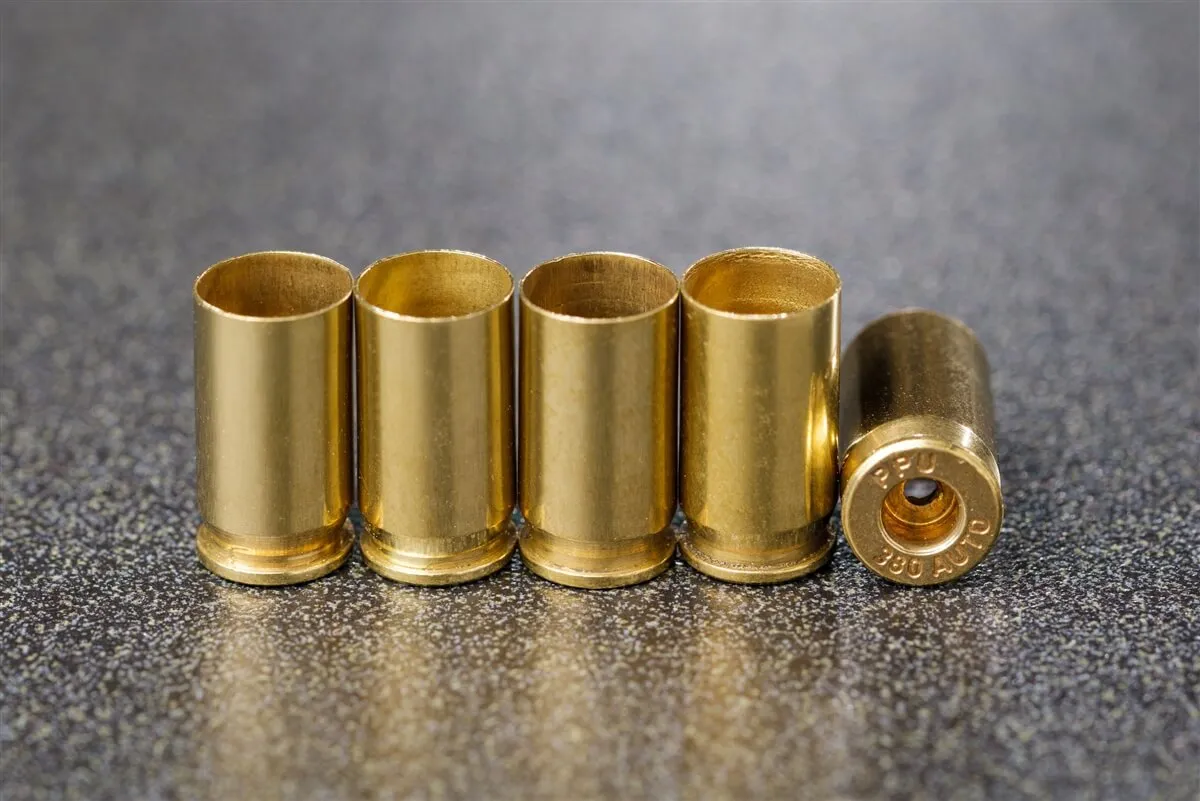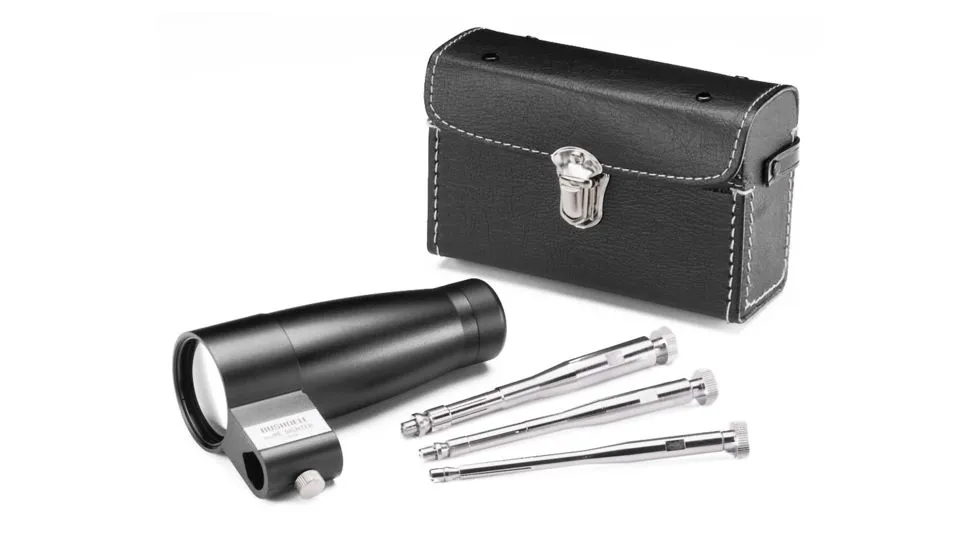If you are planning on upgrading your AR to chamber the .300 AAC Blackout or you're building a new rifle from the ground up just for the .300, the lower receiver is one of the most important components to invest in. Almost all configurations of a .300 Blackout rifle lower receiver on its own are already considered a firearm by federal law.
However, don't let that intimidate you. If you're a beginner or a casual firearm enthusiast, we've got everything you'll need to know before purchasing your first .300 Blackout lower receiver. If you've already got an idea of what you're looking for feel free to skip to our buyer's guide or head to the Best .300 Blackout Lower Receivers.
BONUS OFFER: Get your free shooting range targets to print at home!
Get your free targets to print at home!
The .300 AAC Blackout Round

Before we go into.300 lowers, let's take a look at the.300 Blackout round itself.
The.300 Blackout has quickly become one of the most popular AR calibers since its debut in 2011. The.300 AAC Blackout cartridge for the AR platform, originally designed as a specialist close-combat round for spec-ops, has increased in popularity on the civilian market in recent years.
The heavier grain.300 AAC Blackout provides higher ballistic performance and stopping power than the more common 5.56 subsonic AR configurations. Because the case dimensions of the 5.56 and.300 AAC Blackout are almost identical, most rifles with standard 5.56 components may be used to chamber the.300 Blackout cartridge.
What are Lowers?

The lower receiver, sometimes known as the lower frame, is the part of a rifle or firearm that houses the weapon's trigger mechanism, safety controls, and magazine storage.
The lower receiver of an AR15 is the only part of the weapon that is serialized. Because of this, some lower receivers are regarded as real weapons under the United States Federal law and fall within the authorities of both state and federal governments.
Parts of a Lower Receiver
A lower receiver consists of a plethora of parts. In this section, I'm going to discuss the lower receiver part kits that come together to form a full lower receiver.
Trigger Assembly

You must have a trigger assembly in your lower receiver to shoot your weapon. You won't be able to shoot at all if you don't have it. It comprises the trigger, pins and springs, the housing, and all of the other components.
Magazine Catch

As its name implies, the magazine catch is responsible for holding the magazine in place by catching into a scent slit. The lower receiver without a magazine catch is effectively worthless, as it cannot hold any magazines. Think about having a firearm that cannot carry ammunition.
Grip
When it comes to shooting a pistol correctly, nothing is more important than having the proper grip. Many different grips are available, and conventional AR grips are generally pre-installed on the lower receiver.
Just make sure your grips are legal in your state. For example, California prohibits the use of pistol grips on M4 and AR-15 rifles and will most certainly require you to use a featureless grip instead.
Stock
The stock, also called the buttstock, shoulder stock, or butt is what you put on your shoulder when shooting your weapon to achieve stability. The stock also contains the spring and the buffer tube, both required for firing your firearm.
Stocks are available in a variety of styles and materials. Depending on your build, you may choose between a fixed stock and a folding or adjustable stock.
Housing
The lower receiver housing is the major component of the lower receiver that houses all the other parts. If you're searching for a gun that's light and easy to fire, you'll want a polymer housing. But if you want to shoot .50 BMG rounds, opt for an aluminum or stainless steel housing.
Complete, Stripped, or 80% Lower Receivers
Complete Lower Receivers

Complete lower receivers are the whole package lower receivers. All you need is to attach a complete upper and you're ready to go. It's for this reason that complete lower receivers, like stripped lower receivers, are considered by US law, a firearm.
This part is important since complete lower receivers are considered by United States Federal law as legal firearms. Therefore, you will need to comply with federal and state sales restrictions.
If you're looking to buy a new complete lower receiver, you're going to need an FFL and the shop will need a record of your FFL before any transaction can take place, even when you're ordering online.
If you're budget-conscious or a beginner shooter, a complete lower receiver will work fine for you. They're technically cheaper than purchasing each lower part kit separately and don't come with anything unnecessary or showy features like custom trigger pulls.
Stripped Lower Receivers

Stripped lowers are usually for higher-end guns and experienced shooters who want to customize their AR to fit their needs to a tee.
People usually approach stipped lower receiver assembly one of two ways. First, if you have the tools and experience, self-assembly at home. The other option and what we suggest is to purchase the components you want and have a professional gunsmith install them for you.
Aside from customization, the main advantage of buying a stripped lower receiver is that it's ready to go straight from the box. Just remember that even without the other lower part kits, a stripped lower receiver is still considered a firearm by United States Federal law and will need an FFL.
Popular Articles
80% Lower Receivers

80% lower receivers, also known as unfinished receivers. The reason for the 80% is to establish the notion that they're unfinished lower receivers that still need to be milled out before they can be of any use.
It's for this matter that 80% lowers are NOT considered legal firearms by the United States Federal. So, there are little to no regulations when it comes to purchasing an 80% lower receiver. Also, depending on your state, they may not be legally required to have a serial number on them, making them practically untraceable.
The biggest caveat is that you have to finish the receiver yourself before it becomes functional. If you're building your rifle from scratch, possess the proper tools, willing to put in the labor, and are well-experienced with gun assemblies, this might be the build path for you.
However, for beginners, you're either going to need a really good gunsmith or you should think about sticking to complete receivers instead.
Other Classifications of Lower Receivers

Forged Lower Receivers
Forged lower receivers are easy to find and are the most common type of lowers you'll find in the market. It's essentially a block of metal, usually aluminum, that's heated to extreme temperatures and hammered into the shape of a lower receiver. This heat hammering process is what binds the aluminum molecules together making them light, strong, and durable.
However, this heat hammering process will often create imperfections on the lower receiver that have to be taken off. As a result, this can cause imperfections in the fit and finish of the lower.
To know if you've ended up with a faulty receiver, you'll be able to see some gap issues once you've attached your lower to your upper receiver.
Billet Lower Receivers
Billet lower receivers will start out as a solid aluminum billet that is put through a CNC machine to mill out the final design. The milling process is what gives billet lowers their precise dimensions ultimately leading to a tight fit between the upper and lower receivers.
A tight-fitted lower receiver can make your firearm more accurate and will make it harder for debris and outside conditions to enter your rifle. The milling process also makes billet lowers customizable. Hence, allowing you to add a personal touch to your rifle and giving it a unique look.
Unfortunately, this milling process also means that billet lowers are going to be less durable than forged lowers. So make sure that the billet lower you end up with is made from the highest quality aluminum. A 6061-T6 aluminum will suffice. But a 7075-T6 aluminum will give you more than the strength of the 6061.
You should also expect to pay more for a billet lower than a forged or polymer lower.
Polymer Lower Receivers
Polymer lower receivers are lower receivers built out of high-quality hardened polymer. High polymer beads are heated, melted, and injected into prefabricated molds to create the lower receiver. This process results in lowers that are extremely light without sacrificing the durability of the lower. All for a fraction of the price of steel and aluminum counterparts.
The number one question I always get about polymer AR receivers isn't the cost, or the fit of the lower, but the durability. And the fact is, most companies will always look to switch polymer parts to cut manufacturing costs and increase their profits.
However, the idea that polymer firearm parts aren't durable can be largely attributed to the perceived cheapness and weakness of typical hard plastic we see or use in our everyday lives.
Think about it this way. When the Glock first came out, a handgun with a mostly polymer build, it received a lot of pushback and weariness from the community for being mostly plastic. Today, Glocks are now one of, if not the most popular handguns in the world.
<p id="buyersguide"Buyer's Guide for Lower Receivers
With so many aftermarkets lowers to choose from, you're probably asking yourself, what makes a great lower receiver?
Read our criteria below when purchasing your lower receiver. Save time and money by being informed of the things to look for in purchasing a lower receiver.
Types of Lower Receiver

First, think very carefully about the type of lower receiver that you'll need for your build. The safest options will always be some variation of a complete lower receiver. Complete lowers are guaranteed to save you time and money and will work well for most scenarios.
Again, keep in mind that your receiver's weight, durability, and cost will be affected by the type of receiver you use.
Build Quality
Investing in a high-quality lower receiver for your AR is essential if you want that rifle to endure firing bullets for many years. For a lower receiver, 7075 aluminum combined with a hard coat anodized finish is generally referred to as the gold standard. Aluminum is both sturdy and light, while anodized coatings are very rust and corrosion resistant, guaranteeing long-term endurance.
You should always look for a receiver that has the durability or weight that you need for your build. If you're looking to use high-powered ammunition or fire a lot of rounds out of your AR, it's best to choose heavier materials that will make your rifle last longer.
Stripped or Complete?
Always keep in mind that you'll eventually have to choose between a lower receiver that's been stripped down to its bare components or one that's pre-assembled and ready to go. Do you want a lower that you can further personalize, or do you want a lower that requires little to no maintenance?
Manufacturer
Choose a receiver from a well-known, reliable brand with a loyal following of customers who are confident in the quality of their products. You can find out more about a product by reading reviews. With any firearm, you want to be confident with the parts you're using. The last thing you want is your AR falling apart during a self-defense scenario.
Compatibility
Some of the better lower receivers on the market for the .300 Blackout rounds are also compatible with ammunition from other calibers. This is especially true for the .300 Blackout since the .300 Blackout caliber is very similar in profile to the 5.56 and the .223.
Not only does this give you a more versatile build. But you might be able to repurpose your lowers, later on, should you decide to switch with different load-outs or do another AR build.
You also need to make sure that any lower receiver you choose is also compatible with your upper. The easiest way to ensure this in your build is to go with the same brand as the lower receiver. Manufacturers do their best to encourage brand loyalty this way.
If you do with an alternative brand for your upper, you might find the lower receiver doesn't fit as firmly. This is especially true if you're building an AR-10 as opposed to the more popular AR-15 platform.
<p id="blackoutlowers"Best .300 Blackout Lowers for 2022
PSA AR-15 Complete Classic Stealth Lower

If you're looking for a solid complete lower receiver, consider buying the PSA AR-15 Complete Classic Stealth Lower. This lower receiver is a classic for a reason. It's built from high-quality, durable materials without the hefty price tag.
The PSA AR-15 Complete Classic Stealth Lower comes fully assembled and ready to merge with a .300 AAC Blackout compatible Upper. It's machined from 7075-T6 Aluminum with an anodized Type III Class 2 hard coat and equipped with an M4 stock and M4 lock nut. On top of that, the outer finish should be able to handle normal surface wear and the worst of weather conditions.

Beyond its technical specs, the PSA AR-15 Complete Classic Stealth Lower has a reputation for being comfortable to hold. It has a tight, firm fit with smooth mechanics making it easier to handle and maneuver your rifle even in tight corners. All told, it's a great value for the price, and unlikely to leave you with a case of buyer's remorse.
- Fits most AR uppers
- Heavy-duty construction and superior build quality
- Firm and Comfortable ergonomics
- Great option if you're on a budget
- Trigger feels gritty
- Heavy trigger pull
BONUS OFFER: Get your free shooting range targets to print at home!
Get your free targets to print at home!
PSA Complete Rifle Lower Receiver A2

For those who want to construct a semi-automatic M16A2 replica but prefer the performance of the .300 Blackout cartridge, then the PSA Complete Rifle Lower Receiver A2 is the choice for you.
The PSA Complete Rifle Lower Receiver A2 was engineered to be easy to install, will ship to you pre-assembled, and fit almost any PSA upper receiver. The buttstock was designed to mimic the traditional fixed rifle buttstock of the M16, which might appeal more to traditionalists who like that classic look and feel of a traditional buttstock. If this is the type of design and build you're looking for, then it's definitely worth looking into.
This lower receiver was also engineered to be very versatile. Not only will it load the .300 Blackout, but it will also work with calibers of similar configurations, like the 5.56 and .223, without issue. The main components of the actual lower receiver are machined from 7075-T6 aluminum for superior durability and finished with an anodized MIL-A-8625F, Type III, Class 2 hard coat for great surface wear and corrosion resistance.
Since this is a complete lower, you should expect to get everything you want from a lower, including the trigger assembly, pistol grip, and the fixed M16 style stock. All you need to do is merge it with an appropriate AR upper receiver and grab some .300 Blackout Magazines. to experience a good time at the range.
- Ships fully assembled
- Compatible with most PSA Uppers
- Works with .300 Blackout, 5.56, .223 and similar caliber ammo.
- Durable, Corrosion resistant aluminum build
- Fixed M16 style rifle stock is not for everyone
- Some people have found the stock to feel a little loose
- Heavy trigger pull
PSA AR-15 Complete MOE EPT SBA3 Lower Receiver

The PSA AR-15 Complete MOE EPT SBA3 Lower can be a good option if you're on a limited budget but still want a good, dependable lower receiver for your .300 Blackout firearm. It comes with a military-style trigger pull, which may be lighter than some of the PSA lowers we've had so far.
However, it is still relatively heavy compared to other triggers that you'd find in the market. So if that's a big deal for you, consider replacing this trigger later on. It also comes with an adjustable buttstock with thick rubber recoil pads to minimize the impact of firing a heavy-grained round like the .300 Blackout.
Beyond the technical specs, the grip and stock ergonomics of the PSA AR15 Complete MOE SAB3 Lower Receiver feel comfortable enough to use even if you're planning to spend some time at the shooting range. It's also worth noting that it feels firm and steady from the moment you install it. This isn't always the case with most bargain lower receivers you'll find on the market.
- Adjustable and comfortable handling
- Military style, clean trigger pull
- Collapsible for easy storage
- Compatible with most PSA AR uppers
- Budget friendly complete lower receiver
- Safety selector isn't intuitive enough
- Won't fit too well with alternative brands of uppers
PSA AR-15 Sage/ Fire Lower
If you are looking for a stripped lower receiver with natural ergonomics and easy-to-use safety, then the Palmetto State Armory Safe/ Fire will be perfect for your gun build. PSA uses cutting-edge manufacturing techniques developed by NASA and the aerospace industry to produce this forged Mil-Spec stripped lower.
This type of automated manufacturing system allows for consistency in manufacturing performance while maintaining costs at a minimum. It makes the PSA AR-15 Lower Receiver Safe/ Fire a great option if you're on a budget, without sacrificing much on build quality and product performance.
This lower receiver is built out of 7075-T6 and is designed to host both the .300 AAC Blackout as well as the 5.56 and .223 cartridges without issue. It has the same high-quality black Type 3 class 2 anodized hard coat that you'd expect from a PSA product, giving you that superior surface wear and corrosion resistance without breaking the bank.
The fire selector is one of the places where the Palmetto State Armory Safe/ Fire shines. It's engineered as a high-shelf lower with clear "safe and fire" fire selector markings for increased gun safety on your end. Again, this is a stripped lower receiver. So, you'll need to purchase all the other parts separately to complete your AR lower.
- Budget-friendly price point
- Invtuitive safety selectors
- Good durability and great surface wear/corrosion resistance
- Will fit more AR uppers
- Will work with .300 AAC Black, 5.56 and .223 rounds
- Some aftermarket stocks have a loose fit
- You'll need to invest in a good trigger that will work for this stripped lower configuration
Our Pick
The PSA AR-15 Complete Classic Stealth Lower is classic for a reason. It's built from solid, durable materials with a superior quality finish that, for the price tag, you wouldn't bat an eye at. The best thing about this receiver is it's literally a drop-in lower for you .300 AAC Blackout AR since everything will ship to you already pre-assembled.
It also has great compatibility with most AR uppers. But to get the best results, it's recommended to go with a PSA upper for a tight and secure fit. Also, we suggest looking into some smoother triggers since the one that comes with this Complete lower is a little bit on the heavy side.
Wrapping Up
You have a plethora of options when it comes to choosing a .300 AAC Blackout lower receiver for a custom build or rifle upgrade. Any one of the lower receivers that we've covered here today will make a solid choice whether you're building a .300 AAC Blackout rifle from scratch or simply upgrading your AR to chamber that heavy grain round. If you do end up going a different route, you can always follow our buyer's guide section.
A few reminders before you go. When you buy a stripped lower receiver, double-check compatibility with your AR lower part kits. Also, check its compatibility with your AR upper. Also, preplan your build. Finding out ahead of time the type and classification of the lower receiver you go with will influence the outcome, the durability, and the cost of your overall build. A complete lower receiver will almost always be cheaper than putting together a stripper lower with other AR lower part kits.







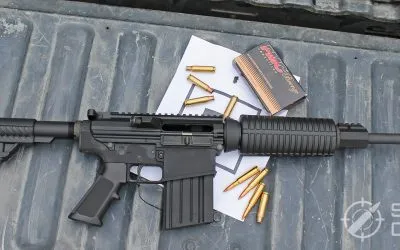
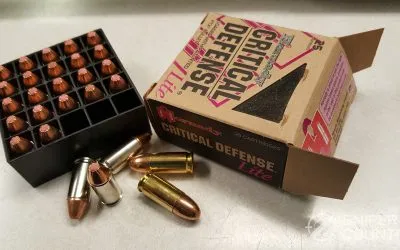
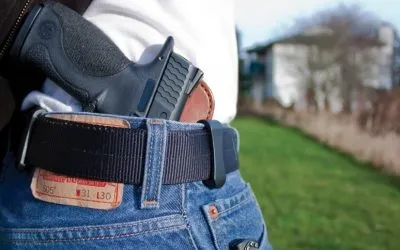
![9mm Glock Models [Ultimate Guide]](https://snipercountry.com/wp-content/uploads/2018/10/Glock-17-vs-Glock-19-vs-Glock-26-vs-Glock-41-vs-Glock-43-WM-400x250.webp)
![Handgun Caliber Chart [2025 Ultimate Guide]](https://snipercountry.com/wp-content/uploads/2018/10/Handgun-Caliber-Comparison-400x250.webp)
![Rifle Calibers [Ultimate Guide]](https://snipercountry.com/wp-content/uploads/2018/12/Header-1900-400x250.webp)






